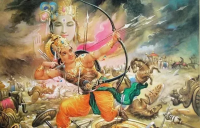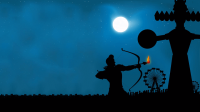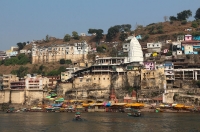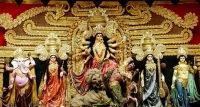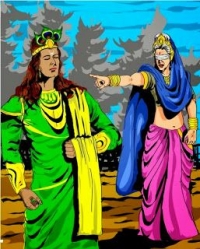
Dussehra
Dussehra is most popular Hindu festival which is celebrated tenth days.Dussehra signifies the victory of lord ram over the demon Ravana in the indian epic of Ramayana.It is held on the tenth day of the Shukla Paksha of Ashwin (Quar) month.Lord Rama killed Ravana on this day and Goddess Durga conquered Mahishasura after nine nights and ten days of war. It is celebrated on the tenth day of the Hindu month of Ashvin which usually corresponds to September or October in the popular Gregorian calendar.Dussehra is one of the three most auspicious dates of the year, the other two are Chaitra Shukla and Karti Shukla.It is believed that victory is achieved in the work that is started on this day.Dussehra is celebrated to mark Lord Rama’s victory over the demon Ravana that signifies the triumph of good over evil.On Dussehra, huge effigies of Ravana are burnt with fireworks which symbolize the quelling of darkness by light.Dussehra also paves the way for the next big festival of Diwali which is also a big festival in India.
festival Vijayadashmi related to God Rama
Ravana was a demon king of Lanka, who desired Lord Rama’s wife Sita.
Ravana kidnapped Sita and brought her to his kingdom where he held her captive. Lord Rama travelled all the way to Lanka with an army of monkeys and with the support of his brother Lakshman and Lord Hanuman he killed Ravana on the tenth day of the battle. The first nine days are celebrated as Navratri. Dussehra is celebrated on the tenth day when Ravana is killed. The Navratri festival is concluded by burning huge and gigantic effigies of Ravana.
festival Vijayadashmi related to Goddess Durga
It is said about this that Lord Shri Rama worshiped Goddess Durga for 9 consecutive days and invoked her power.In another mythology which is prevalent in the eastern and northern states of India, Goddess Durga kills the demon Mahishasura to bring peace to Earth. The festival of Navratri is
celebrated because here also the battle between the Goddess and the demon spans ten days. On the tenth day, the Goddess Durga kills Mahishasura and the day are celebrated as Vijayadashmi meaning the ‘victory that was attained on the tenth day’.each of the nine days preceding Vijayadashami is dedicated to a uniquely powerful expression of the goddess Durga and people in the northern and western parts of the region observe fasting while worshiping the nine forms of the goddess.The eastern and north-eastern parts of India do not fast during Durga Puja as it is a festive time for them and they enjoy the festival with great pomp. Goddess Durga is worshiped in the eastern and
northeastern parts of the country for five days and on the tenth day.
How do we celebrate Dussehra?
Durga Puja –
Durga Puja is a prayer service offered to the goddess Durga and is the primary form of how this festival is celebrated. The largest celebrations of Durga Puja happens in Bengal where worshipers set up elaborate pandals and install an effigy of the goddess within it. During the 6 days preceding Dussehra, people give offerings in the form of prayers, and flowers. On the 7th day these idols are submerged in a water body to symbolise the return of Durga to her husband Shiva, who lives in the Himalayas.
Dandiya Raas –
Dandiya Raas is another way in which people celebrate Dussehra. Dandiya is a traditional dance played by men and women who wield short sticks in each hand, hitting them together to the beat of a dhol. It is nicknamed ‘the sword dance’ because this dance form is a mock-staging of the battle between Mahishasura and Durga. It originated in the state of Gujarat but has become popular all over
India.
Ramlila –
In most parts of northern India and some parts of Maharashtra, a popular way of observing Dussehra is a re-enactment of the Ramayana called the Ramlila. Since the Ramayana is an epic, only the highlights of the Ram’s life is featured and is timed such that the battle scene between Ram and Ravana, with the ultimate defeat of evil occurring on Vijayadashami. On the last and final day of
Dussehra tall effigies of Ravana, along with his son and brother are burned with much pomp and show.

